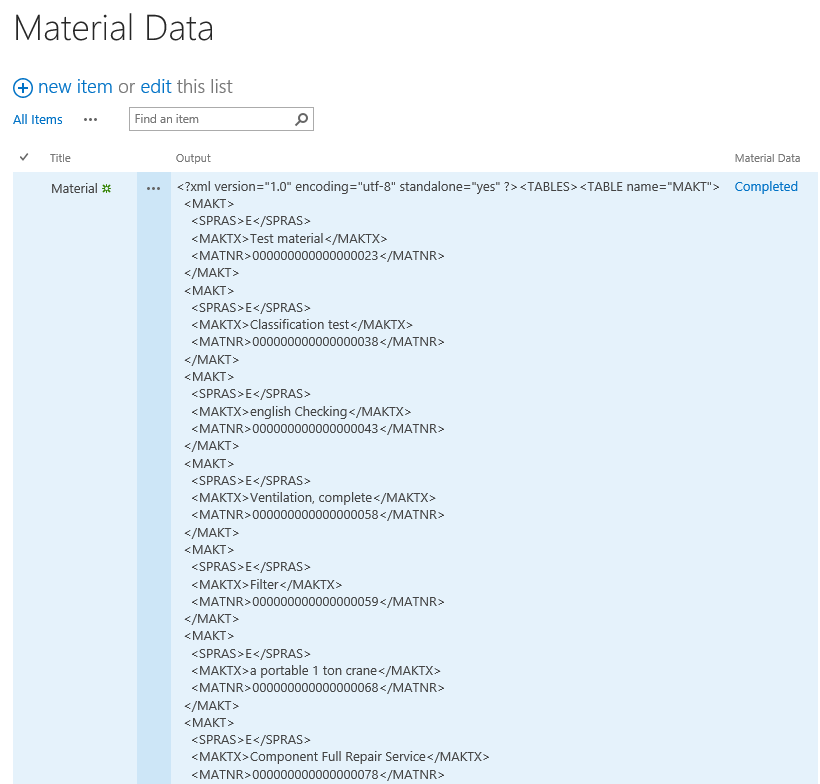In the following example we show you how to call a SAP table in a Nintex Workflow by using the Read SAP table custom action and to display the XML output in a SharePoint list. In the Advanced options section additional conditions are to be set.
As example we use table MAKT. This table contains only a small number of columns and lists SAP material master data.
The aim of our scenario is to save the XML output of the columns MATNR, SPRAS and MAKTX in the workflow variable Output. The number of rows should be limited to 20. Furthermore a Where Clause should be defined which limits the values of column SPRAS (language) to EN (english).
After that the XML output should be displayed in a SharePoint list.
First of all create a new SharePoint list (Custom List) that contains the column output. Name this list Material Data.
Ensure that you configure the column Output as Multiple lines of text and select Plain text as text type.
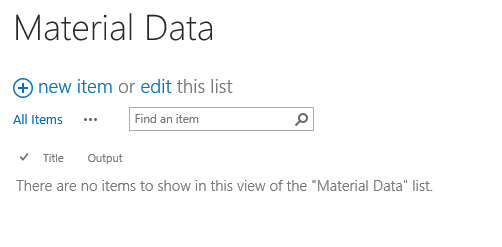
Create a new Nintex Workflow on basis of this list. Add the Read SAP table Custom Action to the workflow and open the configuration screen of the action.
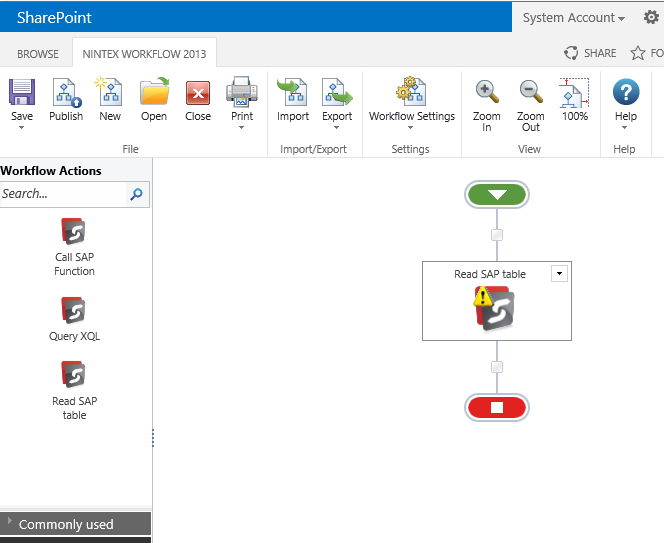
Select your ERPConnect Service Application and and enter table MAKT in the SAP table textbox. Click Load parameters to load all the values of the SAP table in the configuration screen. In the Column selection alle the table columns are listed. Select only the required columns MATNR, SPRAS und MAKTX.
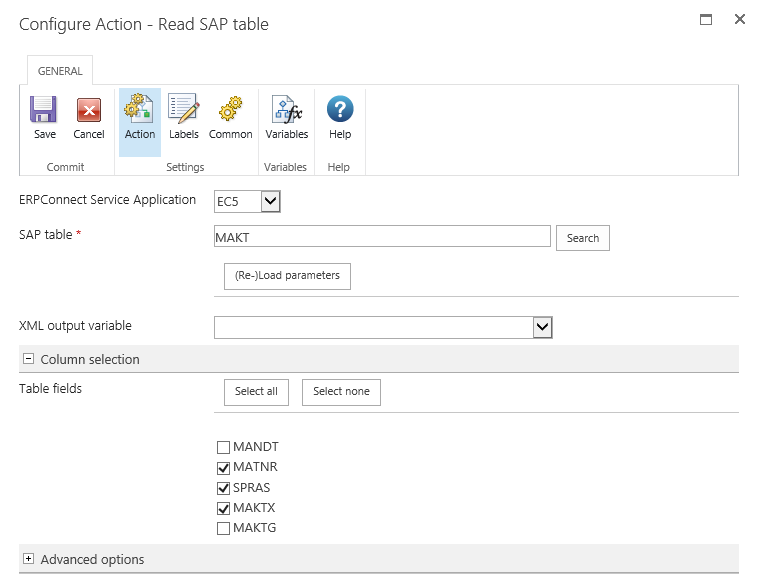
Open menu point Variables to create a new workflow variable named Output which is used to store the XML output. The workflow variable has to be of type Multiple lines of text. Save the settings with the Save button.

Afterwards you can select the just defined workflow variable in the XML output variable field. With this we ensure that the generated XML output will be stored in the workflow variable Output.
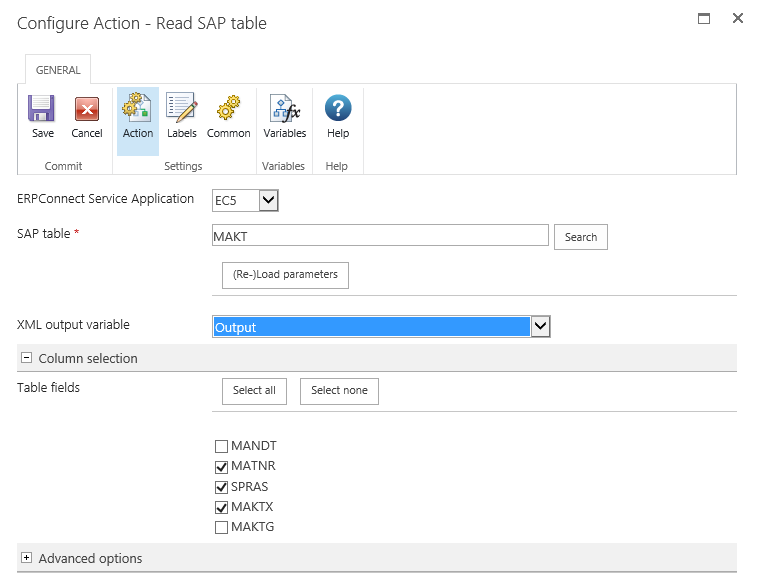
Open the Advanced Options sections. Additional limitations and conditions for displaying the table should be entered here.
The total number of rows should be limited to 20.
Furthermore a Where Clause is to be defined which should limit the values of column SPRAS to EN. To do this enter the following statement in the Where Clause textbox: SPRAS = ‘EN’
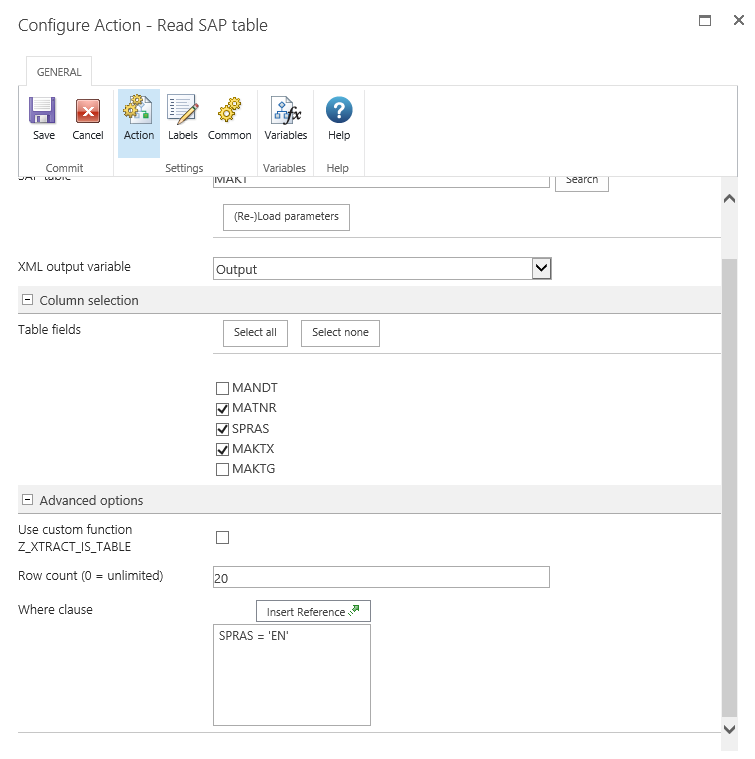
Save your entries with Save. With this the configuration of the Read SAP table function is completed.
Now you have to make sure that the XML output is displayed in the column output of SharePoint list Material Data. Therefore the standard Nintex Workflow Action Set field value is necessary. Add the Workflow Action to the workflow and open the configuration screen.
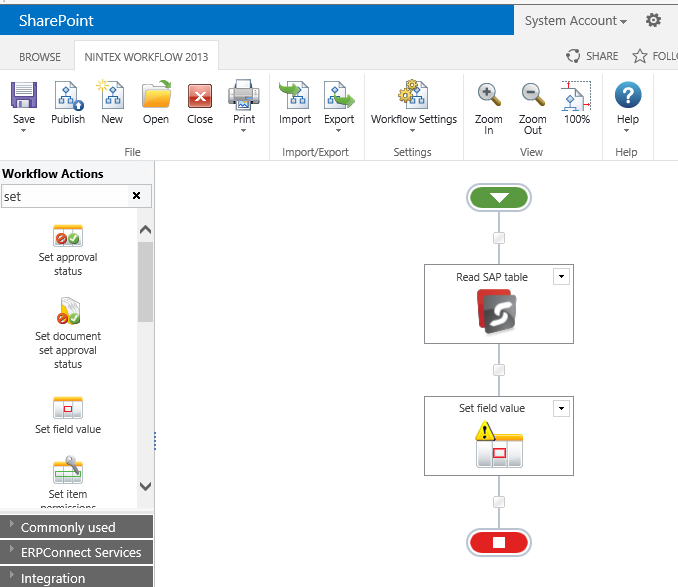
In the dropdown-list next to Set the columns of the SharePoint list are shown. Select the Output column we have created at the beginning of the scenario. In the Equals row you can now assign a value to the column. We want to assign the workflow variable Output as a value. Select Workflow Data next to Equals and select variable Output in the dropdown list. Save the configuration with Save.
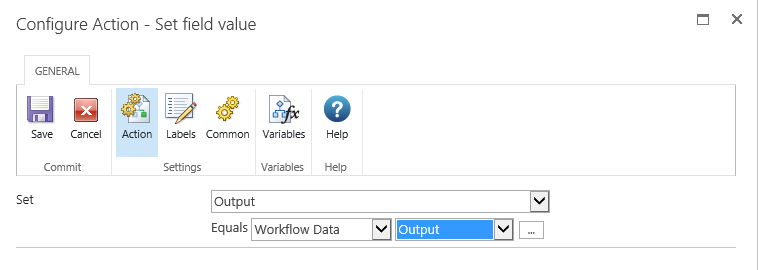
After that save and publish the workflow. We name the workflow Material Data.
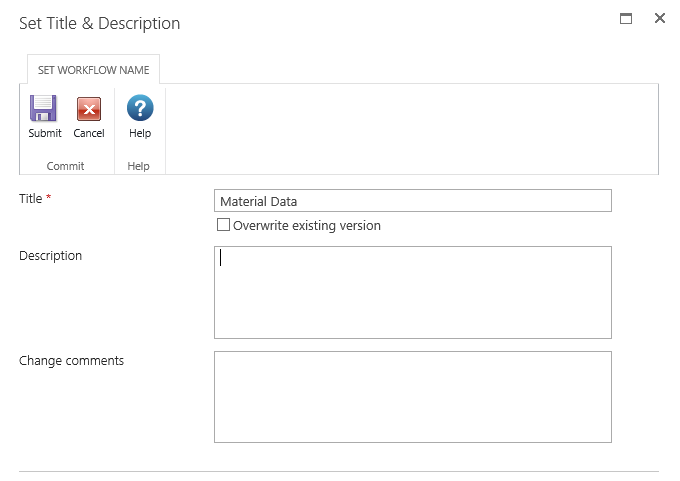
Go to your SharePoint list and start the just created workflow manually via the ITEMS menu. In order to do this you first have to create a workflow item in your list.
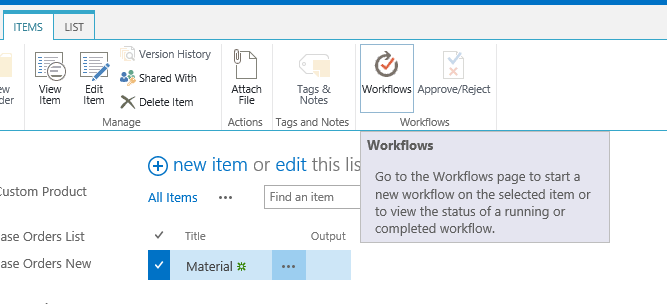
The XML output should be displayed with the defined limitations and conditions in the Output column.
